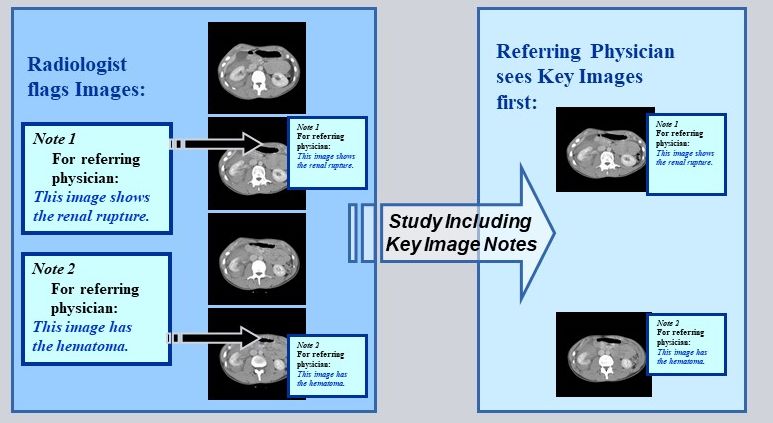Difference between revisions of "Key Image Note"
| Line 46: | Line 46: | ||
==See Also== | ==See Also== | ||
| − | |||
| − | |||
| − | |||
'''Related Profiles''' | '''Related Profiles''' | ||
| − | + | * ''[[Reporting Workflow]] [RWF] may use Key Image Notes as inputs to the reporting process.'' | |
| − | + | * ''[[Simple Image & Numeric Reports]] [SINR] may include Key Images in the report.'' | |
| − | * ''[[Reporting Workflow]] [RWF] may use | + | * ''[[Cross-enterprise Document Sharing for Imaging]] [XDS-I] can be used to share Key Images between sites over a network.'' |
| − | * ''[[Simple Image & Numeric Reports]] [SINR] may include | + | * ''[[Portable Data for Imaging]] [PDI] can store Key Images on media such as CDs.'' |
| − | * ''[[Cross-enterprise Document Sharing for Imaging]] [XDS-I] can be used to share | ||
| − | * ''[[Portable Data for Imaging]] [PDI] can store | ||
| − | |||
This page is based on the [[Profile Template]] | This page is based on the [[Profile Template]] | ||
[[Category:Profiles]] | [[Category:Profiles]] | ||
Revision as of 03:34, 27 February 2019
Key Image Note (KIN) lets users flag images as significant (e.g. for referring, for surgery, etc.) and add notes.
Summary
The Key Image Note Integration Profile enables a user to flag as significant one or more images in a study by referencing them in a note linked with the study. This note includes a title stating the purpose of the flagged images and a user comment field. These notes will be properly stored, archived and displayed as the images move among systems that support the profile. Physicians may attach key image notes to images for a variety of purposes: referring physician access, teaching files selection, consultation with other departments, and image quality issues, to name a few.
Benefits
<List the key benefits the profile provides (e.g. error reduction, increased throughput) and how they come about (e.g. SWF reduces patient errors due to mistyped demographics at the modality by transfering demographics electronically from the Order Filler). Consider using a bullet list for readability>
Details
<A few paragraphs, if appropriate, providing more details (mostly in user-speak, not tech-speak) on what the profile does and how it works.>
<If the user might be familiar with the mechanisms used by the profile, you can mention them here. E.g. Evidence Documents is based on DICOM Structured Report (SR) Templates.>
<If the user might have an appreciation for the problems addressed in the profile, you can mention them here, but keep it short. E.g. Mapping HL7 Order fields to DICOM Modality Worklist attributes can be inconsistent in the marketplace, so Scheduled Workflow provides vendors with more detailed instructions.>
Systems Affected
<List (in user terms) the types of systems they might expect to have implemented actors from this profile, e.g. RIS, PACS, HIS, CAD Workstation, etc. and for each, how it would participate.>
- PACS systems may store, manage, and/or display Evidence Documents.
- Display systems may query, retrieve and display Evidence Documents.
- Reporting workstations may retrieve, process and include details from Evidence Documents in reports
Actors & Transactions:
<Insert an actor-transaction diagram, and or list of Content Definitions>
Specification
Profile Status: Final Text
Documents:
IHE Radiology Technical Framework:
Underlying Standards:
See Also
Related Profiles
- Reporting Workflow [RWF] may use Key Image Notes as inputs to the reporting process.
- Simple Image & Numeric Reports [SINR] may include Key Images in the report.
- Cross-enterprise Document Sharing for Imaging [XDS-I] can be used to share Key Images between sites over a network.
- Portable Data for Imaging [PDI] can store Key Images on media such as CDs.
This page is based on the Profile Template
